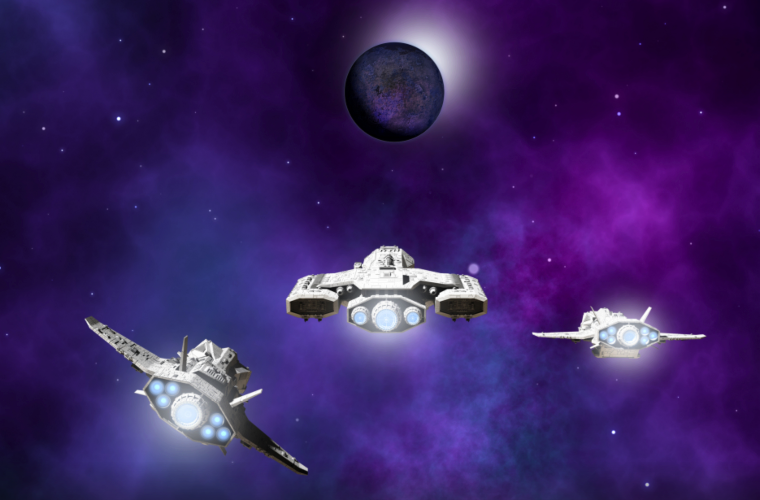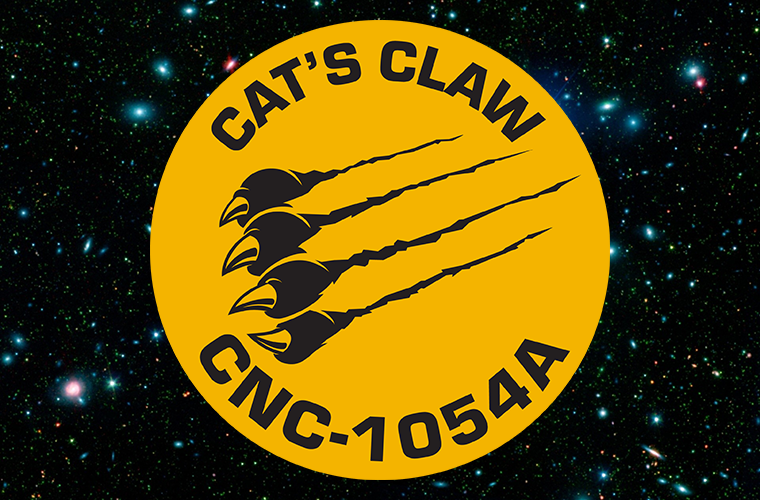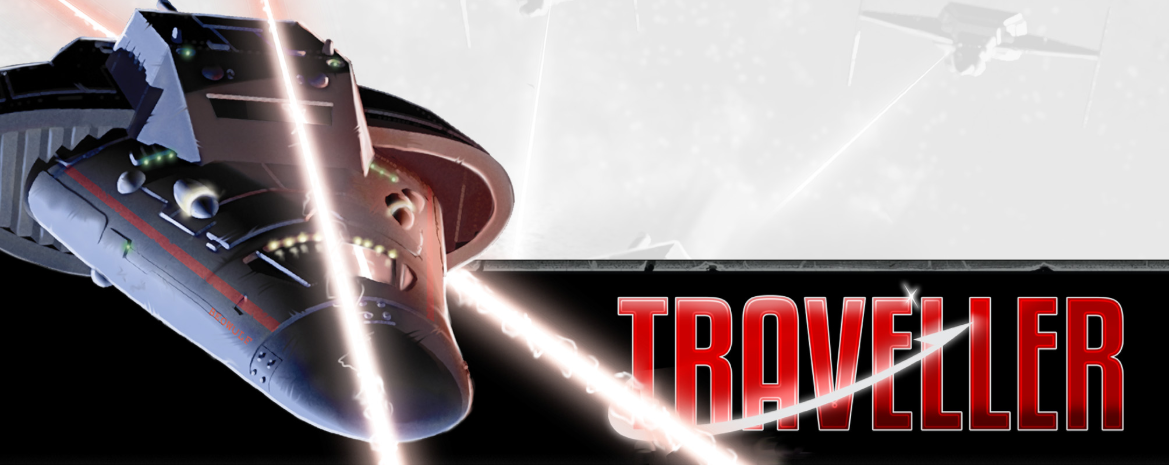Here are two great resources for building sandbox Traveller campaigns.
Category: Traveller (Page 1 of 4)
Here’s what players need to know who are playing in Stan’s ‘Critical Vector’ Traveller game on May 16, 2020.
Our Dicehaven gaming group just launched our Traveller RPG (Mongoose 2nd Edition) actual play podcast. The first two episodes are out now and new episodes will drop each Tuesday.
Introducing the logo for the Cat’s Claw (our ship in our Thursday Traveller campaign)!
I figured the ship would have a Ship’s Registration Code similar to NCC-1701A (Star Trek’s “Enterprise”), so I came up with a naming convention. Here’s how it works.
Having run or played in three different Mongoose Traveller 2nd Edition games in the last week, I’ve noted a few areas where I feel rules clarifications or house rules are important. Searching the Mongoose forums, I found some rulings from Matthew Sprange of Mongoose Publishing based on questions posted by a user named ‘Stumondo’.
1) Leadership
“Stumondo: Pg 72. Does a Leadership roll in combat require a significant action?
Matt Sprange: Depends what the player is doing – if they are just shouting a lot (typical Traveller leadership style), then no.”
The core rules on p. 67 say this (emphasis mine):
“The Leadership skill is for directing, inspiring and rallying allies and comrades. A Traveller may make a Leadership action in combat, as detailed on page 72. Shouting an Order: Average (8+) Leadership check (1D seconds, SOC).
Rallying Shaken Troops: Difficult (10+) Leadership check (1D seconds, SOC).”
And on p. 72 say this:
“The Traveller can pass orders, commands and suggestions to comrades fighting on the same side. To do this, the Traveller makes a Leadership check. The Effect of this check is the number of Boons the Traveller can give to any skill checks (including attack rolls) to other Travellers on the same side. The Traveller must be able to freely communicate to another Traveller in order to grant a Boon.
However, bad leadership can end a battle quicker than good leadership can win one. If the Effect of the Leadership check is negative, the opposing side may inflict a number of Banes equal to the Effect to combatants on the Traveller’s side.”
My takeaways from this are:
- Leadership cannot be used to ‘help’ outside of combat.
- A satisfying narrative justifications is needed to allow Leadership rolls. You can’t just say ‘I shout orders’, you’d have to somethign specific like ‘Men, I’ll lay down suppressing fire while you immobilize the enemy.”
2) Boons & Banes
“Stumondo: Pg 59. If a player is subject to more Boons than Banes, do they still cancel to nothing, or does it result in a Boon, and vice versa?
Matt Sprange: Go with whatever you have the most of.”
The core rules on p. 59 say this:
“If a Traveller has help, such as good tools, competent aids or other beneficial circumstances, he receives a Boon. This means he rolls an extra dice during a check and discards the lowest. … If a Traveller is hindered in a check, such as with poor tools, a dimly lit environment or other negative circumstances, he receives a Bane. … A Traveller can only be under the influence of one Boon or Bane during any one check. If he receives both a Boon and a Bane for the same check, they will cancel out and he will roll no extra dice. At the same time, if he receives multiple Boons or Banes, he will only be subject to one.”
My takeaways from this are:
- Differences from D&D — In D&D, If you had 5 Advantages and 1 Disadvantage, you’d they’d all cancel each other out so you’d have neither Advantage nor Disadvantage. Per Matt Sprange though, you’d count them up, and if you had 5 Boons and 1 Bane, you’d net out to have a Boon die to roll. Not sure I like this since it runs counter to D&D which is most players point of reference, so we may house-rule it to work like D&D (I need to discuss with the other two Dicehaven Traveller GMs).
- Helping — So far as I can see, there is no formal ‘helping’ or assistance rule in Traveller. Since Leadership cannot lend a Boon outside combat, generally you can’t just say ‘I’ll help him’ to get a Boon. Although conceivably a helping character helping another character could provide the helped character a beneficial circumstance, my bar to allow this would be pretty high though, otherwise ‘helping’ would become quickly overpowered and you’d have a boon on all skill checks. My ruling would be that you have to be pretty specific as to what you’re doing to help, that the help yield something specific like ‘I dig through the ships stores and try to find a higher tech hydrospanner to use to help Gant repair the engine issue’, and you’d also then need to do a skill check (which could also produce Banes).
- Duration — It seems to me that Boons and Banes last as long as they make narrative sense, but typically would only last for the duration of a single skill check. If you’re making a check and the circumstance makes narrative sense to have you at advantage (due to a helper doing something meaningful and succeeding on a check), you get the boon. It’s not like a Fate Point in Fate or a Benny in Savage Worlds where it hangs around indefinitely until you need it.
3) Ready/Delay Action
“Stumondo: In combat, is there any delay and/or ready option?
Matt Sprange: Not an action as such, but I would not have an issue with a character acting later in the round. Initiative shows how quickly people react, not necessarily the order they should act in.”
My takeaway from this is that while you can’t Ready an Action (like in D&D 5e) or Delay (like in Savage Worlds), you can ‘Delay’ in the sense of asking the GM to move you down the initiative order. Once the round is gone if you still haven’t acted you lose you turn though.
4) Damage
“Stumondo: Pg 74. After END is reduced to 0, can damaged be split between STR and DEX, either from a single attack, or multiple attacks. If so, does being conscious with damage to 3 stats have any further effect (like it did in 1st ed)?
Matt Sprange: Yes, and no.”
My takeaway from this is that, unlike in some earlier editions of Traveller, a single attack can split damage between two Characteristics which then has a huge impact (for both PCs and NPCs) in terms of system lethality. Consider the example of a Character with END 7, STR 7, and DEX 7 whose END is reduced to 0.
If this character takes 12 damage:
- In Classic Traveller Rules, the character would be unconscious (END 0, STR 0, DEX 2 for example after applying the 12 damage).
- In Mongoose Traveller 2e rules, the character would still be conscious (END 0, STR 1, DEX 1 for example after applying the 12 damage).
However, this seems to conflict with the language in the book p. 74:
“Damage is initially applied to a target’s END. If a target is reduced to 0 END, then any excess damage is deducted from the target’s STR or DEX (target’s choice of which).”
I want to post on the Mongoose forums and make sure I didn’t misunderstand this.
[Side note: in our games we sometimes call the difference in the to-hit target number and your roll the ‘Shift‘ (a Fate RPG term), but by that we mean what Traveller calls ‘Effect‘, which then adds to damage.]
5) First Aid
“Stumondo: Pg 71. First aid is an option in combat, taking 1 significant action. Outside combat, per the skill, first aid takes 1D Minutes. Should I be imposing a DM -6 for the reduced timeframe?
Matt Sprange: No, assume you are just trying to stop someone dying in the heat of battle!”
The core rules on p. 78 say this:
“First Aid: Applying first aid restores a number of characteristic points equal to the Effect of the Medic check. Points restored by first aid are divided as desired among all damaged physical characteristics. First aid must be initiated within one minute of the injury.”
My takeaways from this are that:
- Rules as written don’t require a first-aid kit or special gear to administer first aid (although a GM might want to require this despite no rule asking for it).
- The battledress ‘Medikit’ (p. 96) is the only listing of a first aid toolkit, but that’s not the same as a first aid kit / medical kit.
6) Vacc Suits
“Stumondo: Self-sealing says it seals small rips and tears. At what point does an amount or type of damage get past this? When should someone worry about being exposed to vaccum?
Matt Sprange: Up to the ref, but getting stabbed or shot will probably do the trick…”
Battle-suits (core rules p. 96) can be upgraded to be self-sealing:
Self-Sealing (TL11): Self-sealing systems can be added to any armour (except ablat) when it is being made. The armour can seal breaches and repair minor damage. This cannot reconstruct a severely damaged suit of armour, but does ensure that a damaged vacc suit or torn jacket heals itself. Self-Sealing costs Cr2000.
Tents (core rules p. 115) can also be self-sealing:
Self-Sealing (TL13): Structures can be made self repairing and self-sealing for Cr2000. Small breaches and rips are automatically fixed in seconds.
Swords and blades used to attack in Melee can cause breaches (core rules p. 115) which thwart self-sealing capabilities:
When attempting to capture an enemy vessel, a sword is much less likely to cause significant damage to vulnerable systems or cause a hull breach than a gun, but is better at opening a self-sealing vacc suit to the airless cold of space.
A vacc suit provides life support for six hours (per the core rules, p. 96).
In general, vacc suit capabilities are not that well described, so I would add these clarifying house-rules.
[su_note note_color=”#FFFF66″ text_color=”#333333″]
Vacc Suit House Rules
Vacc Suits are not self-sealing unless upgraded with the TL11 self-sealing feature listed under Battlesuits.
These three Vacc Suit features (from the core rules on p. 96 under options for battlesuits) are also available as upgrade options:
“Magnetic Grapples (TL8): Magnetic plates in the boots of the armour allow the user to walk normally on a spacecraft without artificial gravity. Costs Cr100.
Self-Sealing (TL11): Self-sealing systems can be added to any armour (except ablat) when it is being made. The armour can seal breaches and repair minor damage. This cannot reconstruct a severely damaged suit of armour, but does ensure that a damaged vacc suit or torn jacket heals itself. Self-Sealing costs Cr2000.
Thruster Pack (TL9): A simple thruster pack gives the user the ability to manoeuvre in zero-gravity over short distances. An Athletics (dexterity) check is required to use a thruster pack accurately. Thruster packs can only be used in microgravity environments. A thruster pack costs Cr2000.”
Vacc Suits and Battlesuits which have the Self-Sealing feature and take ranged weapon damage self-seal and recover from the slug or energy weapons fire.
Vacc Suits and Battlesuits which take melee blade weapon damage take damage which cannot self-seal. The suit then starts venting and the GM adjudicates the mechanics of what happens next.
[/su_note]
7) Grenades
“Stumondo: I can’t find rules for grenades. What are the scatter results on a missed attack? Does a grenade do the same damage to targets who are beside them, as those who are on the edge of their radius?
Matt Sprange: Everyone in the radius is affected. If a grenade misses, don’t get too bogged down on where it scatters. It either misses completely or blows up near something dangerous/funny. Down to the ref.”
My understanding of the grenade rules is that there is a blast radius, targets cannot dodge but can dive for cover, but there aren’t any rules on variable damage or scattering on a miss.
8) Effect of Armour in Collisions or Falling
“Stumondo: When in a vehicle collision, do you apply a characters armour to the damage, or does it bypass?
Matt Sprange: Pretty sure there is a line somewhere in the rules that says armour is ignored in a collision.”
“Stumondo: Does armour affect falling damage?
Matt Sprange: No. But kudos to the player who tries to claim that.”
My takeaway from this is that armour will not stop collision or falling damage.







Recent Comments